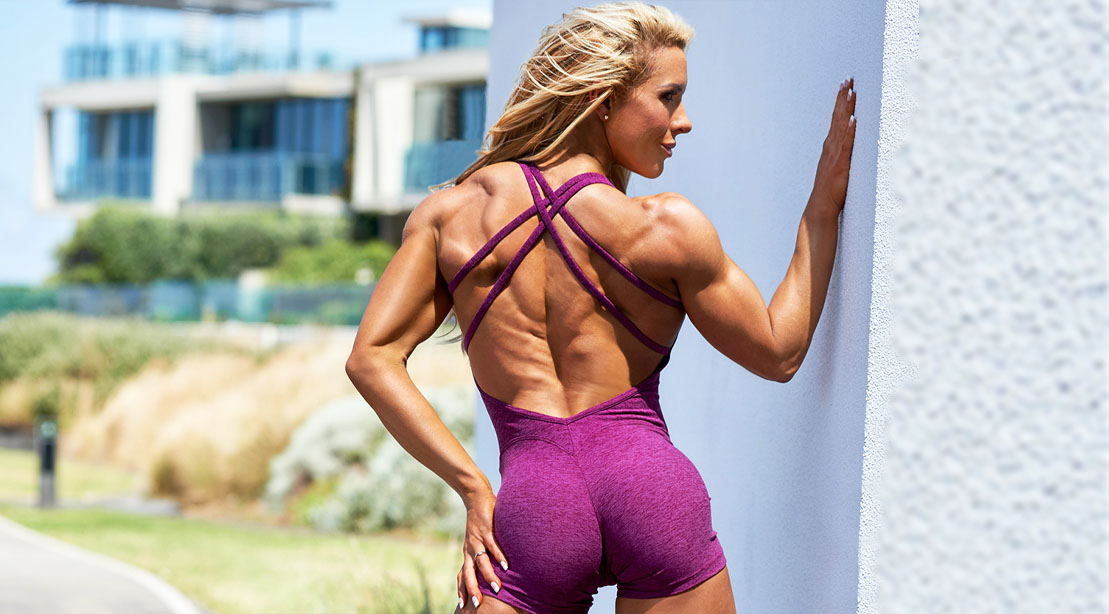28-Days-to-Lean Meal Plan
With the right plan and the right discipline, you can get seriously shredded in just 28 days.
Read article
They say that one of the best ways to get the physique that you want is to study someone that you are impressed by in the gym, observe their routine, and then try to replicate their program so that you can see the same results. That’s all great, but this concept is probably not advisable as relates to your glute goals! Fortunately, Anna McManamey, a certified personal trainer, sports nutritionist, and fitness competitor sat down with M&F Hers to save any awkward situations by answering your burning booty questions. And, the girl from Sydney even provided a modifiable glute workout that you can really get behind.
When it comes to building glutes, do you prefer high volume or high weights?
Both! The glutes are comprised of multiple subdivisions that carry out several different actions, so when it comes to programming, you want to split your glute training up into three different types of exercises. This is a concept popularized by glute expert, Bret Contreras, called the “Rule of Thirds” and it has influenced me greatly.
The first movement pattern is vertical hip extension. This includes squats, deadlifts, lunges, step ups and good mornings. These are physically taxing exercises that create a lot of muscle damage, and as such, are best suited to higher intensities closer to failure with lower volume.
Next you have horizontal hip extension including hip thrusts, glute bridges, back extensions, cable pull throughs, reverse hypers and kickbacks. These are less taxing and we can recover faster from them, so they tend to lend themselves best to moderate and higher rep ranges, and higher overall volume.
Then, the final category is lateral, or rotary, and this includes seated abductions, standing cable abductions, lateral walks and side lying hip raises. These get a lot of glute activation with very little muscle damage, especially banded variations, so you can program these at even higher rep ranges. With all this in mind, you can train your glutes hard with quite a lot of volume and frequency, so long as you incorporate a variety of these movements.
How often should we train glutes in general, and why?
Three times per week with varying intensities has produced the best results for me and my clients. If we go back to the “Rule of Thirds”, we know that some exercises elicit more fatigue than others, meaning they cannot be trained as hard and as often, such as deadlifts. Movements that are less fatiguing can be trained at higher frequencies and volume. They key is to use a combination of exercises at varying intensities and frequency to maximize glute development as you will see from the workout.
In addition to protein, are there any supplements that might support our glute building efforts?
I do have some key products that I supplement with year-round, these are:
If you can go the extra rep or two, would you recommend it?
Absolutely! The glutes are like any other muscle, in that in order to grow, they require an appropriate amount of stimulatory reps. These are the reps at the end of a set when the weight starts to really feel heavy. While it’s not necessary to go to complete failure all of the time, you do want your sets to be hard enough to cause a hypertrophic adaptation. No one wants to leave gains on the table!
Are you training for a specific goal, yourself?
I will be competing on November 4 at the WBFF Australia Pro/AM on the Gold Coast in the Pro Fitness division. This will be my first time back on stage in five years! I took time off last year while I opened Reform Health & Performance, and before that COVID forced all shows to be canceled in 2020 and 2021, so this has been by far my longest time away from the stage since I started competing 11 years ago. I’ve gained a lot more size since my last show in 2018, so I’m looking forward to revealing a very different physique!
You can follow Anna McManamey.
